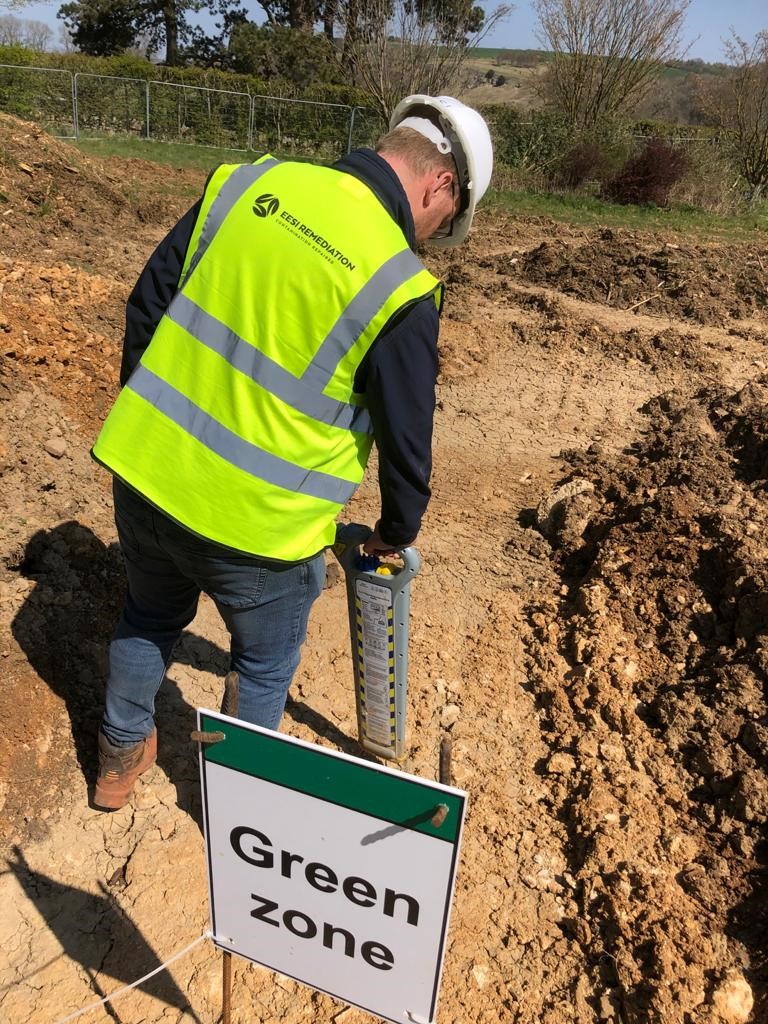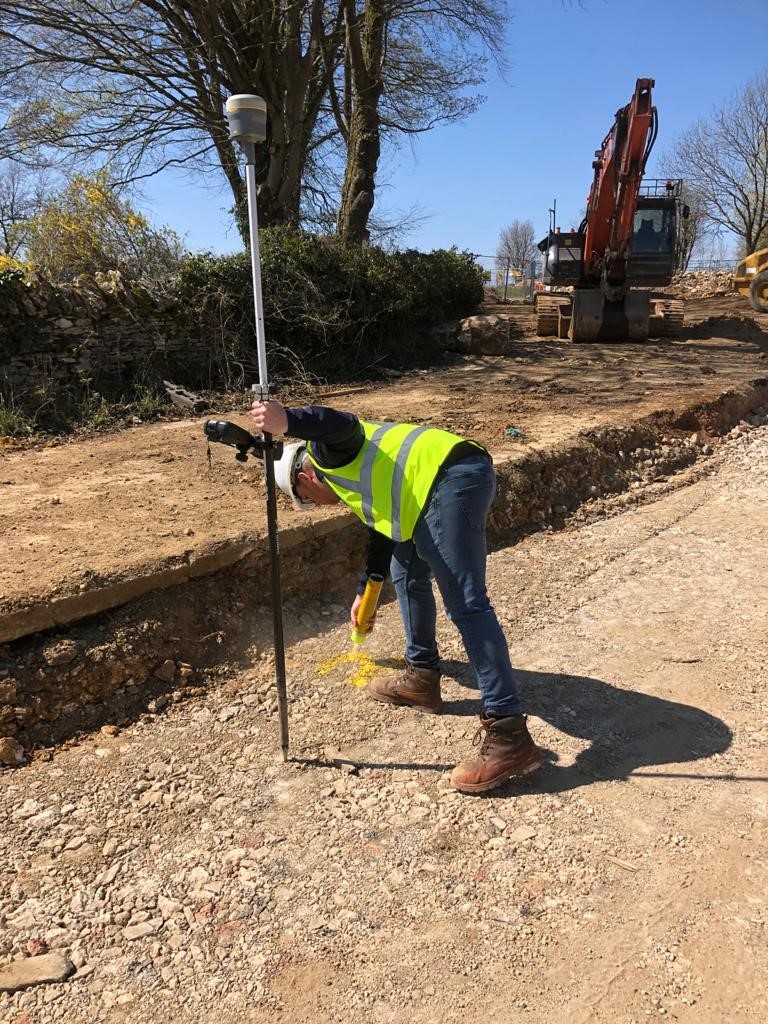Unpicking an Asbestos Legacy at a former commercial facility, for redeveloped for residential use.
Ullenwood, Cheltenham, UK. Unpicking an Asbestos Legacy
Commissioned as Principal Contractor, we supported an innovative and forward-thinking house builder prepare a former commercial site, for future residential use. Our role included the completion of demolition, remediation and enabling works. As well as waste management and regulatory liaison. Proactively working with the client’s environmental consultant throughout the project. The main remediation objective was the removal of identified asbestos cement bound fragments within made ground and infilled demolition rubble – soil impacted with asbestos fibres and other non-asbestos contaminated waste.
The Background
The 14-hectare site was originally a military hospital complex built during World War II. Many of the buildings constructed during this period were modified over the years to reflect the change of use into a business park, which operated until 2016. Following cessation of business park operations, the site became derelict, and was closed to the public, except for one residential property in the north-eastern corner of the site. A legacy from the long commercial history of the site was the impact from asbestos containing material (ACM), and to a lesser extent, coal tar road surfacing.

A Meticulous ‘Clean-Up’
Previous site investigations identified fourteen areas that were historically infilled with construction and demolition waste, and made ground-contained visible cement bound ACM.
Despite laboratory soil testing showing asbestos fibre counts to be below the 0.1% hazardous waste threshold, the presence of visible ACM deemed the infill in areas to be hazardous waste. It was clear that these materials required offsite removal to meet regulatory approved ‘clean-up’ objectives. Consequently, we put forward an approach to remove the ACM fragments through hand-picking, to declassify the waste fill to non-hazardous waste.
Working with an independent asbestos consultant, we developed a comprehensive verification process to support the treatment and waste declassification operation. ACM removal was completed by trained asbestos operatives in a conveyor fed hand picking station.
All removal operations were strictly controlled and monitored and treated soil was subject to detailed visual inspection by an independent asbestos consultant, who then provided certificates of cleanliness alongside our own laboratory testing regime.

Priority Number One
Prior to commencing work, robust control procedures were put in place to maintain safe working conditions. This included the preparation of a CAR 2012/CAR-Soil compliant Asbestos Management Plan, a Construction Phase Plan, alongside task specific RAMS and the deployment of our Mobile Remediation Treatment Plant Environmental Permit.
The establishment and delivery of the project included measures to mitigate against potential exposure to airborne asbestos fibres, including clean and dirty areas, robust decontamination and hygiene procedures and dust control/suppression.
Navigating the Complexities of Remediation
Managing the sequencing of the wider demolition and enabling scope of works also required careful planning. For example, the demolition, crushing and processing of building slabs and existing hard standing was phased, and only completed once areas had been cleared of ACM or asbestos impacted soil.
Several areas of asbestos impact extended below trees, that were subject to tree preservation orders, through consultation with the local authority arboriculture officer a ‘lines of evidence’ approach was agreed, and TPO trees growing through ACM debris were removed.
To further add to the complexity of the project, during the advancement of the planned remediation work it became evident that asbestos thermal insultation debris was impacting areas of the site that had historically been considered clean.
This unforeseen event presented a significant challenge, which we proactively addressed in close liaison with the client’s environmental consultant. Concurrent to characterising the extent of this impact, we developed the existing remediation methodology to protect against cross contamination and optimise the segregation of asbestos impacted hazardous waste from non-hazardous and inert soil.
Cost-Saving Strategies
Having successfully removed cement bound ACM from most infill areas, the recovery and removal of soil impacted with thermal insultation debris was undertaken by a sub-contracted licensed asbestos removal contractor.
The modify approach comprised increased measures to eliminate airborne fibre release, the removal of ACM debris from soil prior to excavation and additional verification testing. These additional waste recovery and disposal activities were recorded within our declared Material Management Plan (MMP).
The MMP also included the recovery and re-use of inert crushed material and uncontaminated natural ground and the disposal of all other waste streams, including green waste, segregated coal tar road surfacing.
Through the commitment of our client to achieve the very highest standards of clean-up, our close working relationship with the appointed environmental consultant and our controlled remedial approach we managed to; recover >5,000 tonnes of material for re-use on site, deflect >12,000 tonnes of material away from hazardous waste disposal through on-site treatment and provide a validated, cleared, site ready for residential redevelopment.
For more information on this case study, or to find out how we can help you with your next remediation project, please get in touch.
We’d Like to Hear From You.
Enter your email address and receive a first-look at our unique BioPiling innovation.

